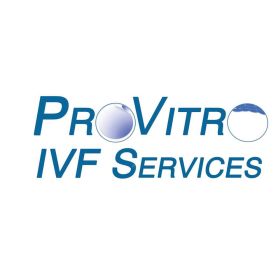
Located in Southwestern Ontario, Provitro was the first Boviteq accredited team in Canada and the experienced team is able to produce excellent results. Fradon Donor Facility is located immediately North of Woodstock, Ontario.
-
This email address is being protected from spambots. You need JavaScript enabled to view it. -
Hours: Monday - Friday from 8:00am - 4:00pm
-
EMBRYO TRANSFER:
Embryo transfer is a tool that can be applied to a herd to speed genetic improvement within a herd. It can also be used as a means to increase farm revenue by selling embryos and live animals, either internationally or domestically.
The original model for genetic improvement using embryo transfer recommended using the top 10% of your herd, displaying the characteristics important to you, as donors and the bottom 50% of your herd as recipients. The top 10% cows are your genetically superior cows with which you plan to improve your herd. Animals in the bottom 50% of the herd would be used to carry calves from the donors instead of their own. The genetic improvement model allows for rapid improvement of the herds genetics by eliminating offspring from the bottom 50% of your herd.
Developing a market for the sale of embryos can be tricky. Not all producers will have access to those markets. There are organizations that can help market embryos for you or you can try to develop your own market. Embryos can be priced in a very broad range and of course everyone wants to maximize the revenue generated by the sale of embryos by asking “top dollar” for their embryos. In order to cover the expenses of an average flush, which yields roughly 6 transferable embryos, you need to sell those embryos for $150 each. Any price above this will result in a positive return on your investment. If on the same flush you could sell embryos for $300 each, the sale of 3 embryos would pay for the flush and leave you with 3 embryos to use in your own operation. -
DONOR PREP
Cows selected as donors should be of good reproductive “status.” Good reproductive status of the cow is the key to maximizing the number of transferable embryos recovered in your embryo transfer program. It is preferred to select donors that have had a calf every year, calved with little or no negative health issues, returned to expression of estrus in a timely manner after their last calf, and at least 50 days since their last calving.
Nutritionally she should be on a rising plane of nutrition. Her ration needs to be balanced for fibre, protein, energy, minerals, trace minerals, and vitamins. The feed used in that ration should be of high quality with no spoilage to maximize dry matter intakes and reduce the risk of exposure to mycotoxins.
Physically she needs to be in good shape with no health concerns, no lameness or mastitis, and kept in a very comfortable and operator friendly facility.
A donor’s reproductive cycle should be monitored and recorded to aid in determining the most appropriate time to start her super stimulation program. She should be palpated to examine her reproductive tract to ensure that her uterus is “clean” and that there are no other abnormalities that will have negative effects on results. Her ovaries should be examined to ensure appropriate structures that are consistent with recorded heat events. -
PROGRAMMING
Once it has been determined who you are going to flush and that she is a suitable donor, it is then time to “program” her. “Super ovulation” or “super stimulation” is the process by which we ask the donor to produce more than one or two “eggs” for a given heat. This is accomplished by giving her twice daily injections of a product containing follicle stimulating hormone (FSH) for four days. It is very important to give the FSH injections exactly 12 hours apart so as to keep the FSH level at the required level to induce the multiple follicles to grow. On the last day of the FSH injections the donor cow is injected with prostaglandin (Estrumate or Lutalyse) which induces her to come into heat. This can be a time consuming process that needs to be scheduled into your management tasks for those days. Attention to all of the details at the time of super ovulation will improve the success of your flush. Schedule enough time into your day to allow for administration of the injections, record keeping, and monitoring the donor and recipients for heats. All products used in the super ovulation program should be handled according to the labelled instructions. As an example, Folltropin should be stored in a refrigerator after it is reconstituted/mixed. It is recommended not to reuse needles and syringes during the super ovulation program as this will reduce the risk of contaminating the remaining Folltropin resulting in reduced effectiveness.
-
RECIP MANAGEMENT
One of the most important factors affecting the outcome of your embryo transfer program is recipient quality. Recipients are the animals that will be receiving embryos recovered from your donor animals. Each recipient should have a healthy reproductive status and health history, similar to the requirements of a good donor. The best recipients are open heifers that are of breeding age and size. Mature cows can be used for recipients. The best “mature” recipients are young, preferably 2 calves or less, and have had no infertility and/or health issues. Problem breeders, cows that started their lactation with health issues such as retained placenta or metritis and old heifers of excess body condition should be avoided to maximize the success of your embryo transfer program.
Recipients should be appropriately vaccinated with a modified live vaccine which, at a minimum, includes BVD and IBR, 2-4 weeks prior to the implantation of an embryo. Testing your recipients for Neospora, Leukosis and on some farms BVD is recommended. Recipients should be fed a well balanced diet and on a positive plane of nutrition. The feed should be properly fermented and free of mould, as was described for the donor. All of these diseases and potential stresses will alter the success of the embryo transfer program by reducing conception rates, increasing pregnancy losses, or altering your ability to market the offspring of your donor carried by a positive recipient.
There are a number of techniques to align the recipient with the donor so that fresh embryos can be implanted on flush day. The techniques will be discussed when the donor cow is set-up for a flush.
Recipients need to be housed in facilities that will allow for easy handling but also give the producer the opportunity for easy heat detection. If recipients can be handled with minimal stress, pregnancy rates will be optimized. -
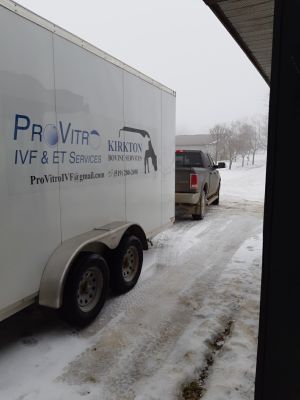
FLUSH DAY
On flush day our team will arrive at your operation to collect, process, and implant embryos. We will need a relatively sheltered, level location, which is close to an electrical outlet to park our mobile lab. We will need the donor’s pedigree and bull information including, full name, registration number, sire code, and batch number. This information is required to be entered into our software system and will be used to generate the required forms for the embryos recovered that day. The donor must be properly restrained for us to first examine her reproductive tract for an adequate response and then to collect the embryos. Once the donor has been flushed the filter will be returned to the lab where it will be searched and the processing of the embryos will be performed.
If there are embryos to be implanted into recipients on the day of the flush, they will be examined after the donor has been flushed and the filter has been returned to the lab. The recipients should be adequately restrained to allow for easy handling and to minimize stress during that examination. Locking head gates or a chute system is the preferred method of handling.
-
EXPORT/IMPORT INFO
Embryos destined for export may have differing requirements depending on the country of destination. Arrangements or contracts are often made in advance of flush day to export embryos. If it is known prior to flush day that the resulting embryos are to be exported it is best to share that information with us at time of setting up the donor. Some countries have specific requirements that need to be addressed and planned for prior to flush day. If embryos are collected in the hopes of export then we will process and store them to meet the requirements of the most common export markets.
Embryos destined for export need to be held in storage facilities that have been approved by the Canadian Food Inspection Agency. They must not come in contact with embryos of "lesser health status". Once embryos have been moved from our storage facilites/tanks and into non approved storage facilities or on farm tanks those embryos no longer meet the health requirements of the importing country and can no longer be exported.
-
REGISTRATION INFO
We will submit any required information from flush day results to the respective breed associations to allow registration of offspring from flushes done by our team on your farm. Depending on requirements of specific breeds, calves resulting from frozen embryos may or may not require implant certificates. Holstein Canada for instance only requires the reporting of the frozen embryo number and reference to the flush day information in order for a calf to be registered from that donor.
-
FOLLOW UP
You will be contacted by our staff approximately two months after the flush and/or transfer of embryos. Our staff will be asking for a report on the success of the transfers. It is important that the results are reported so that we can track our level of success on your farm. An accurate reporting of which recipients became pregnant will allow us to understand the success of a given transfer in relation to the quality, stage and any additional comments recorded by us at the time of the transfer. Your cooperation in reporting this information is key to us providing the highest level of service and success on your farm.
-
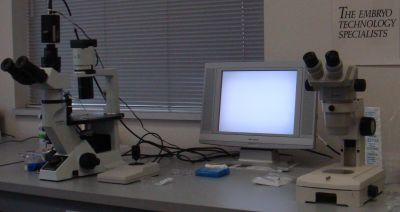
EMBRYO TECHNOLOGIES:
As leaders in the veterinary profession our embryo transfer team is committed to staying current as new embryo transfer technologies emerg. We are dedicated to the provision of excellent progressive embryo transfer and customer service. We will treat everyone with integrity, compassion and respect. With over 30 years of experience in the embryo transfer field, our embryo transfer team looks forward to serving you to help you achieve your embryo transfer goals. Visit the embryo technologies tabs to see the services offered by our team.
-
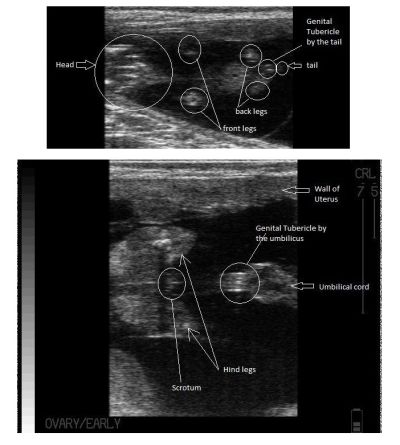
ULTRASOUND FETAL SEXING
Fetal sexing can be performed using an ultrasound by a trained veterinarian and requires the pregnant cow be approximately 55 to 90 post-breeding (with optimal days being 60-75 days post-breeding). Before 55 days post-breeding, the fetus has not had enough time to develop and thus sexing cannot be performed. After 90 days post-breeding, the fetus descends over the dam’s pelvic brim and cannot be reached to determine the sex. Adequate restraint of the animal is essential to perform this task as too much movement can inhibit the veterinarian’s ability to determine the sex of the fetus. Once the fetus has been located, the male genital tubule (MGT) or female genital tubule (FGT) can be observed. The MGT can be observed directly behind the attachment of the umbilicus to the abdominal wall, or the scrotum can be observed between the hind legs. The FGT can be observed as a series of bright lines immediately below the fetus’ tail. The accuracy of this procedure varies with the skill level and practice of each veterinarian, however, you should expect an accuracy of higher than 95%. It is up to the owner of the animal to determine what steps, if any, will be taken once the fetus’ sex has been determined.
-
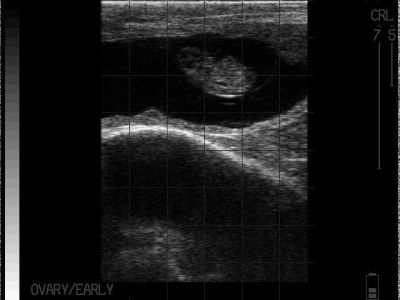
ULTRASOUND - EARLY PREGNANCY DIAGNOSIS
Early pregnancy diagnosis is a very valuable tool for producers. A cow that is diagnosed as pregnant is important, however, it is even more important to diagnose cows that are open, so that corrective actions can be taken to ensure these animals are bred back and carry on with their productive lives as quickly as possible.
Early pregnancy diagnosis is performed with the use of an ultrasound by a trained veterinarian and requires the pregnant cow be at least 28 days post-breeding, however, in some animals pregnancy can be suspected as early as 25 days post-breeding. It is important to re-check for pregnancy later on in gestation as it has been proven that 10.5% of pregnancies can succumb to early embryonic death between 28 and 42 days post-breeding.
Adequate restraint of the animal is essential to perform early pregnancy diagnosis as too much movement can inhibit the veterinarian’s ability to determine the pregnancy status of said animal. At the time of pregnancy diagnosis, the quality of the fetus and the placenta can also be evaluated and used as a predictor of viability of that fetus. The fetus’ heart can be observed beating by approximately 35 days post-breeding.
As stated, the main benefit of early pregnancy diagnosis is finding animals that are not pregnant. Other benefits include the ability to determine the pregnancy status of an animal approximately one week before she could be confirmed by manual palpation and the ability to diagnosis multiple fetuses early and take corrective actions if desired.
-
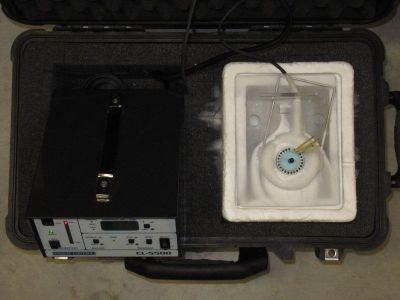
FROZEN EMBRYO TRANSFERS
Pregnancies from the transfer of embryos into recipients is the final goal of the flushing cows. Recipient management and selection are the greatest variables affecting results of a flushing program once viable embryos have been recovered. Observation for signs of heat in the recipients is key to identify suitable animals. Embryos are implanted 7 days after the recipient has shown a good quality heat. Recipients must be handled in such a way to minimize stress on implantation day. The recipient is palpated to identify whether or not there is an appropriate structure on her ovary that would make her suitable to accept an embryo that day.
The handling and transfer of the embryo is a very technical skill. Embryos are not as resilient as semen and therefore need to be treated with respect. Following the thaw technique outlined on the Certificate of Recovery and Freezing that accompany the frozen embryos is very important. Once loaded into the transfer gun the embryo should be protected from extreme temperature fluctuations, exposure to any potential contamination that may introduce infection into the uterus, and be transfered into the recipients uterus with as little trauma to that uterus as soon as possible. As with any technical skill not all people who transfer embryos will have similair success. Feed back to those that are doing embyro transfers on your farm is key to help them identify their level of success. Not all recipients will be suitable to accept an embryo on implantation date even though they reportedly have shown a good heat. If you present 4 recipients to us for implantation we will on average only implant embryos into 3 of them and reject the 4th.
OUR ET TEAM
-
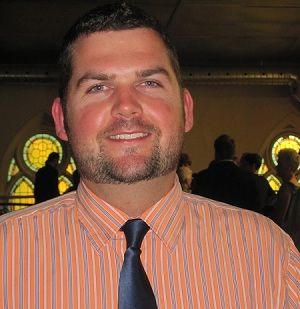
Dr. Adam Haight, DVM
Dr. Haight graduated from the Ontario Veterinary College in 2005. Upon graduation he moved to British Columbia and worked at the Abbotsford Veterinary Clinic, a 100% dairy practice with a strong focus on embryo transfer and preventative medicine.
-
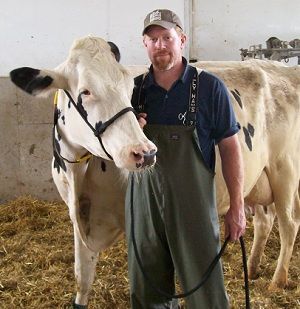
Dr. Reg Clinton, DVM
Dr. Clinton was raised on a dairy farm and has been involved in the agricultural community most of his life. After attending the University of Guelph as an Ontario Agriculture Collegiate 96 'Aggie', Reg went on to graduate from the OVC in the class of 2000.
-
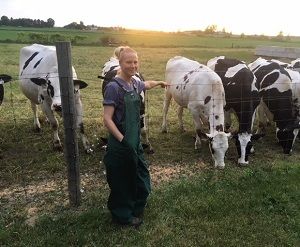
Dr. Tricia Hornsby, DVM
Dr. Tricia Hornsby grew up on a beef farm in Kentucky. She was active in 4H and FFA and showed Angus cattle as well as swine and sheep. She graduated from The Ohio State University College of Veterinary Medicine in 2012.
-

Dr. Brooke Gilmer, DVM
Dr. Brooke Gilmer grew up on a dairy farm in Eastern Ontario where she developed a keen interest in agriculture and the dairy industry at a young age.
-

Alicia, Embryo Transfer Administrator
Well known for her contagious laugh and exuberant personality, Alicia is a Graduate of Ridgetown College with a diploma in Agriculture.
-

Paula, Embryologist
Paula is a Registered Veterinary Technician who graduated with a diploma in Veterinary Technology from Ridgetown College in 2004 before joining the Kirkton Veterinary Clinic.
-
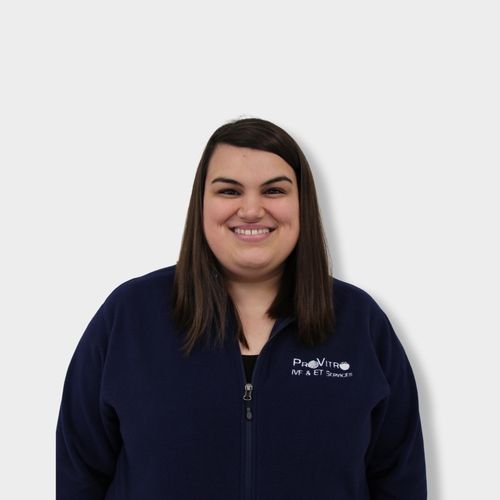
Tarrah, Embryo Transfer Support
Biography coming soon!